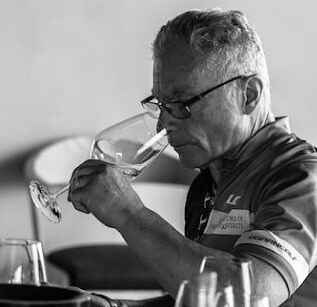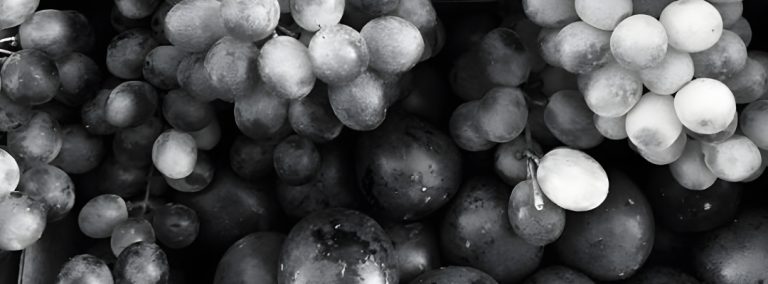Valpolicella is a medium-bodied red wine with high acidity, prominent cherry flavors and a ruby red color. It comes from the Verona area of the Veneto, a region in the northeast of Italy. While most people have heard of Chianti and Barolo, Valpolicella tends to be a lesser known Italian red. Nonetheless, it’s an excellent value wine and a perfect choice if you’re looking for a red wine that goes with most foods, has good fruit and acidity, and won’t break your budget. Valpolicella is usually low in tannins, particularly a Classico or Superiore, and can have aromas of herbs, as well as some spices. And while Valpolicellas are generally drunk young, some styles have great potential for aging.
What are the key designations and styles of Valpolicella?
- Valpolicella Classico. Valpolicella Classico is produced in the historic center of the Valpolicella growing region. It’s a bright red wine with a ruby color and red fruit flavors, including cherry, raspberry and blackberry. You can pair a Valpolicella Classico with pasta with red sauce, pizza, or even veal and chicken dishes, and it gives you something a bit different if you’re mainly used to drinking Sangiovese-based wines. A Valpolicella Classico is often one of the best value red wines you can find on a restaurant’s wine list.
- Valpolicella Superiore. Valpolicella Superiore is a weightier style wine than a Valpolicella DOC with fruity notes of cherry and black currant alongside spices. It’s aged for at least one year before release. A Valpolicella Superiore or Superiore Classico is fuller in flavor and higher in alcohol. The acidity in this wine means it pairs well with red sauces and it would be an ideal wine to have with Eggplant Parmigiana or Chicken Cacciatore.
- Valpolicella Ripasso. This wine involves an additional step in the winemaking process compared to a Classico or Superiore. To make a Ripasso, a traditional Valpolicella wine is aged on the lees, or skins and residue, from an Amarone. This gives it more body and complexity. Because it’s a fuller wine, it goes well with hard cheeses, pot roast and really any meat that’s slow cooked, as well as steak, short ribs or braised duck.
- Amarone. If you’ve not tried it before, Amarone is one of the great red wines of Italy. It’s a big robust red that’s full bodied and high in alcohol. It can have bitter notes along with ripe cherry, dried fruit and hints of chocolate. Amarone is a wine that you can put in your cellar and save for a special occasion as it improves with age. For wine food pairings, it goes well with hard cheeses, blue cheese, Osso Bucco, braised lamb shank served in a rich sauce, and braised duck. Amarone is also a nice choice for venison and boar.
How much does an average bottle of Valpolicella cost?
You should be able to find Valpolicella wines in most wine stores and supermarkets that have a section for Italy. Expect to pay between $15 and $20 for a quality Valpolicella Classico or Superiore. You may pay a bit more for a Ripasso, and an Amarone will fall in the $50 to $100 range.
What is the Appassimento process?
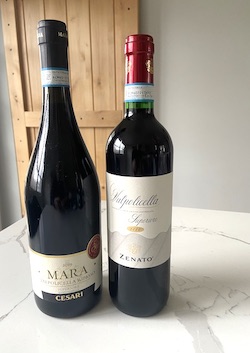
The Amarone style of Valpolicella is quite distinct. It’s higher in alcohol, fuller-bodied and the top quality level of Valpolicella. To produce Amarone, winemakers must first select the best bunches of grapes from the harvest and dry them for a minimum period of time before the winemaking begins.
This process is called Appassimento and is achieved in drying lofts where grapes are laid out on bamboo mats and left until at least the first of December. The lofts tend to be humidity and temperature controlled and can contain different grape varietals. In the past, the Veneto region of Italy was a large producer of silk and the bamboo mats where the grape drying takes place were originally used in silk production.
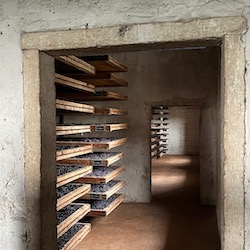
Fermentation is watched carefully to make sure the wine ferments dry and not sweet. A regular Amarone DOCG is aged for at least two years before release, and a Riserva is aged for four. These wines may be aged in large Slovenian oak barrels or smaller casks.
When they make a Valpolicella Ripasso, they take a regular Valpolicella wine before it undergoes full maceration and put it onto the residue left from an Amarone, so the wine picks up more body and intensity. Its name actually means “to go over again” in Italian and that’s exactly what they do with this wine. Ripassos can have semi-dried grapes added in and they may contain 15% of Amarone in the final blend. A Ripasso needs to be aged for a minimum of one year before release and a Ripasso Superiore must be a minimum of 13% alcohol.
Wine Fact: The word “amaro” in Italian means bitter. They first started making this wine in Italy in the early 1900s and only 65% of any given harvest can be put toward its production.
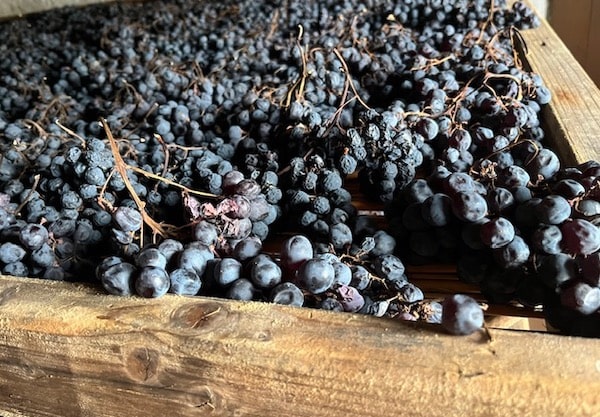
What’s a Valpolicella Recioto?
Recioto della Valpolicella is a traditional sweet red wine that comes from the Verona area and was the predecessor of Amarone. In fact, it’s where the practice of Appassimento originated. Only the fullest and ripest grapes are selected for a Recioto. The word “recioto” means ear in the local dialect and refers to selecting only the grapes on the sides of the bunches, which get the best exposure to the sun and will be the ripest. Once they have dried, what remains is more concentrated fruit flavors and sugars. You’ll see Recioto written on the sides of non-Valpolicella wine bottles as well. It’s a type of sweet wine made in the Soave region and a few other areas of the Veneto.
More on Valpolicella Classico vs. Superiore
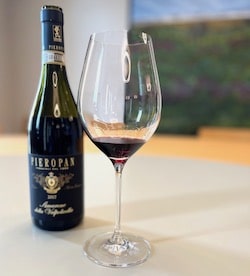
Valpolicella, Valpolicella Classico and Valpolicella Superiore are all similar in taste and have the same ruby color. What differentiates these wines is where they are grown, how long they’re aged for, and the intensity of flavor you get in a typical bottle. A regular Valpolicella can come from anywhere in the Valpolicella area, but a Classico must come from the original Classico designation. This is the area that traditionally produced the highest quality wine. For a Superiore or Classico Superiore, only the best grapes are used. These tend to fuller flavored and more structured wines with more body to them.
The grapes in the Valpolicella blend
All Valpolicella, from a regular bottle to a Classico or Superiore is a blend of the Corvina and Rondinella varietals. These are indigenous to the Veneto region of Italy. In fact, in order to be called Valpolicella, a wine must contain at least 75% Corvina and/or Rondinella. The remaining 25% of the Valpolicella blend can be made up of other varietals including Molinara, Oseleta and Ngar. Vineyards often have a canopy of vines that grow high above the ground, horizontally or diagonally.
Corvina
Corvina is a late-budding grape with fairly thick skin that lends itself to the Appassimento process. Wines made from Corvina are medium to bright in color with good acidity. They can have flavors of cherry, violets and bitter almonds and tend to be medium in body.
Rondinella
Rondinella is another native grape to the Veneto region. Corvina is actually the parent grape to Rondinella which is best known for being quite resistant to fungal diseases.
Molinara
The Molinara grape contributes acidity to a Valpolicella blend. It also adds color and has softer tannins that can make the wine more approachable.
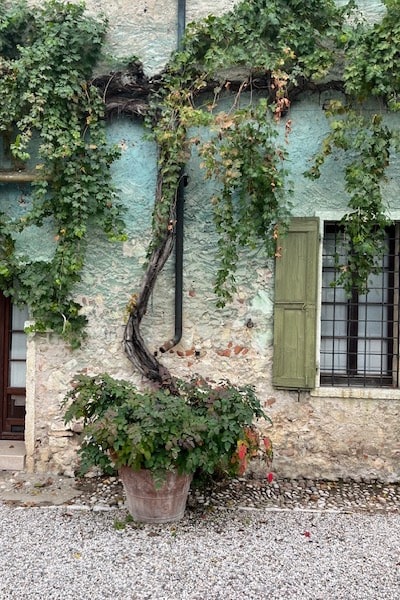
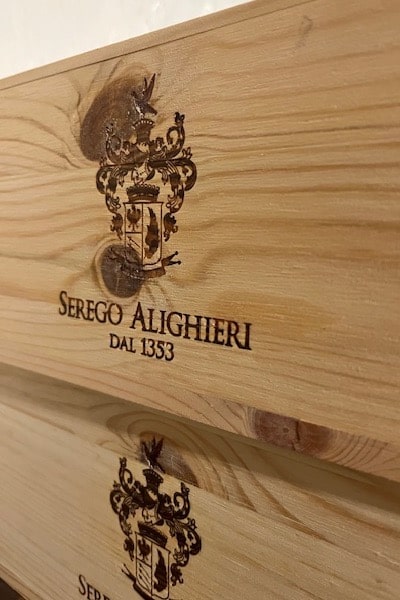
The Dante Alighieri Connection
If you’ve ever come across a reference to Dante’s Inferno then you have a connection to Valpolicella. Born in 1265, Dante Alighieri is one of Italy’s most famous literary figures. His Divine Comedy was an epic 14th century poem written in the Italian vernacular. With its fairly vivid descriptions of the underworld, Dante’s Inferno has become a part of the literary canon, but it’s not his poetry but rather his personal life that is relevant here. Dante had several children and one of his sons purchased some land outside of Verona. In 1353, the son planted vineyards and began making wine.
Today, the Alighieri family is still in the business. Their historic vineyards produce all levels and styles of Valpolicella. Behind the gates to the estate you can find ancient farm buildings with lofts of drying grapes and cellars full of cherry and oak wood barrels. If you’re traveling in this part of Italy, the Possessioni Serego Alighieri is a beautiful and historic property to visit and they have an excellent wine shop with a larger selection of older vintages.
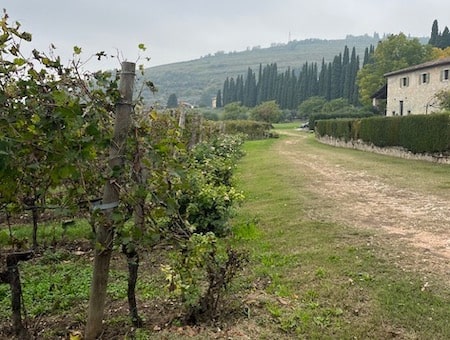
7 Valpolicella producers to look for
- Masi. Starting in the 1970s, Masi led the Valpolicella industry in improving the quality of its wines. Masi is also responsible for recreating the Ripasso style and ensuring its commercial success. Masi is one of the most well known producers to make and export wine from this region of Italy and you can find Masi Valpolicella in most wine stores.
- Serego Alighieri. Serego Alighieri produces wine from the estate of the famous Italian writer and poet Dante Aligheri. Now in its 21st generation, the winery is owned by the family but all estate wines are made in partnership with Masi. Look for the family crest on the label of the bottle.
- Speri. Another family with a long history in the Valpolicella Classico region, Speri is a seventh generation producer. They’ve been making single estate bottles since the 1960s and were one of the first to start this trend.
- Allegrini. Allegrini is a higher-end producer from this region of Italy. They are known for their innovative wine making which blends the traditional with the modern.
- Tommasi. The Tomassi family has been making Valpolicella since 1902. They’re located in the Classico area and their wines are typical of the different Valpolicella styles.
- Cesari. Cesari has been making wine since 1936. This producer has some of the best value Valpolicellas you can find. The vineyards are sustainably farmed and situated in the Classico region.
- Tentuta Santa Antonio. Established in 1989 by four brothers, Valpolicella from Tenuta Santa Antonio is made outside of the Classico region where the grapes benefit from a unique soil type called scaia. The wine is sustainably farmed, comes in a very accessible price range and is well worth trying.
Other wines from the Veneto region of Italy
From Venice in the East to Lake Garda in the West, Veneto is one of the northernmost regions in Italy. While the canals of Venice are often first to come to mind, much of the land in the Veneto region is actually dedicated to agriculture and Veneto is well-known for its wine production. In fact, it holds 25% of all DOC and DOCG designations in Italy.
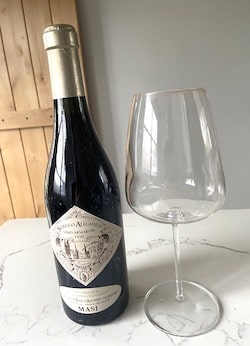
But by far the most famous wine to be made here is not still, but rather sparkling. That’s because Veneto is where Prosecco comes from! Made from the Glera grape grown in the hilly area north of Verona, Prosecco is fast becoming one of the world’s most popular sparkling wines. You won’t struggle to find it by the glass in most restaurants across the US.
Another popular wine from Veneto is Soave. Soave is one of Italy’s great dry whites. It’s light to medium in body with good fruit and structure and flavors and aromas of apricot, peach, tropical fruit, spice and almonds. The high acidity in this wine allows it to age beautifully. In addition to Valpolicella, another red from Veneto is Bardolino. This wine is made from vineyards adjacent to Lake Garda. It’s light to medium in body, and a great red to drink young. You can also find Bardolino wines as rosés.
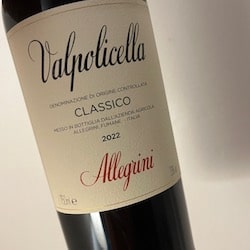
Italy Wine Knowledge: DOC stands for Denominazione di Origine Controllata and is a mark of quality that you’ll see written on wine bottles from Italy, for example Valpolicella Classico DOC and Valpolicella Superiore DOC. In DOCG, the G at the end stands for Garantita and means the wine meets an even higher quality standard.

